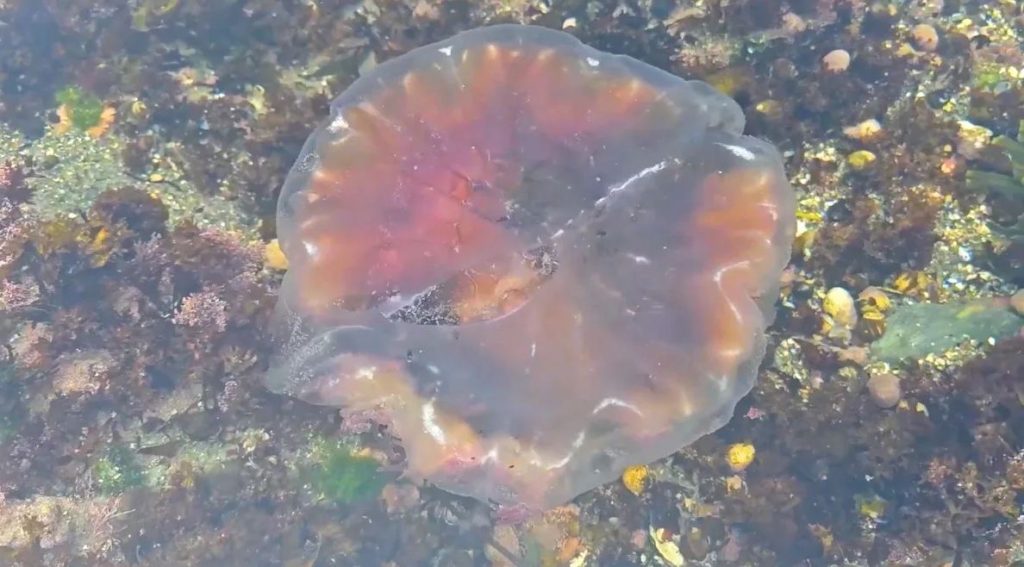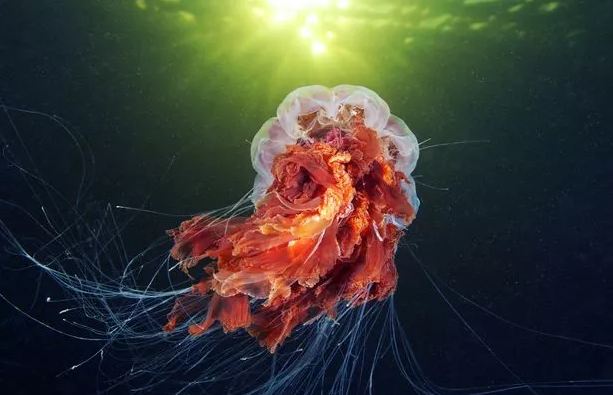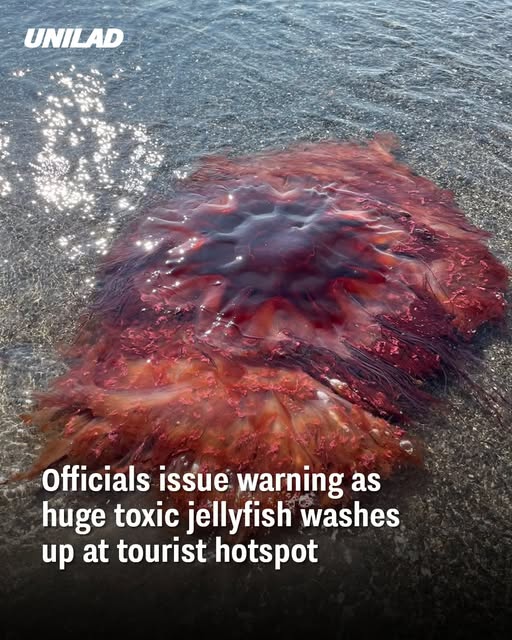Multiple sightings of the lion’s mane jellyfish were reported near Willard Beach. It is one of the world’s largest and most venomous jellyfish. Find out more in the article below.
Unexpected Visitors at Willard Beach
Willard Beach, a popular spot during the summer months, recently became the site of an unusual marine encounter. Several beachgoers and lifeguards spotted the jellyfish in shallow waters just off the coast. These sightings quickly caught the attention of local authorities, who moved to inform the public of the potential danger. Photographs shared on social media showed the jellyfish’s long, trailing tentacles and distinctive orange, red, and purple hues. Known for their size, lion’s mane jellyfish can grow up to 8 feet wide with tentacles stretching over 100 feet in some cases. Though not all individuals reach these massive sizes, even smaller ones can inflict painful stings.

Why Lion’s Mane Jellyfish Are Dangerous
The lion’s mane jellyfish (Cyanea capillata) is not only impressive in appearance but also capable of delivering powerful stings. Their tentacles contain thousands of stinging cells, called nematocysts, which release venom upon contact. For humans, a sting from this jellyfish can cause immediate burning pain, redness, and swelling.
In some cases, stings may trigger more severe reactions such as muscle cramps, nausea, and difficulty breathing—especially in children, the elderly, or those with allergies. While the stings are rarely fatal, they can be extremely uncomfortable and sometimes require medical attention. Experts advise not to touch the jellyfish, even if it appears to be dead on the shore, as the tentacles can still sting long after the animal has died.
Officials Respond with Warnings and Advice
In response to the sightings, South Portland officials posted signs at Willard Beach warning swimmers and visitors to stay alert and avoid contact with jellyfish. Lifeguards are monitoring the area closely, and beachgoers are encouraged to report any further sightings. Authorities have not closed the beach, but they strongly recommend staying out of the water until the jellyfish move away from the shore. Local marine biologists are also studying current patterns and water temperatures to understand why the jellyfish appeared in this area.
What to Do If You Are Stung
- If someone is stung by a lion’s mane jellyfish, medical experts suggest the following steps:
- Rinse the affected area with salt water—not fresh water—as fresh water can worsen the sting.
- Carefully remove any tentacle fragments with a pair of tweezers while wearing gloves or using a cloth.
- Apply vinegar to help neutralize the venom.
- Seek medical attention if symptoms worsen or if the person shows signs of a severe allergic reaction.
Nature’s Beauty Comes with Risks
While the lion’s mane jellyfish is a fascinating creature, its presence near popular beaches serves as a reminder of the power and unpredictability of nature. Officials will continue to monitor the situation, and beachgoers are advised to stay informed and cautious.

Conclusion
For now, those visiting Maine’s coastline should enjoy the views from a safe distance and stay alert for any signs of jellyfish activity in the water.

















